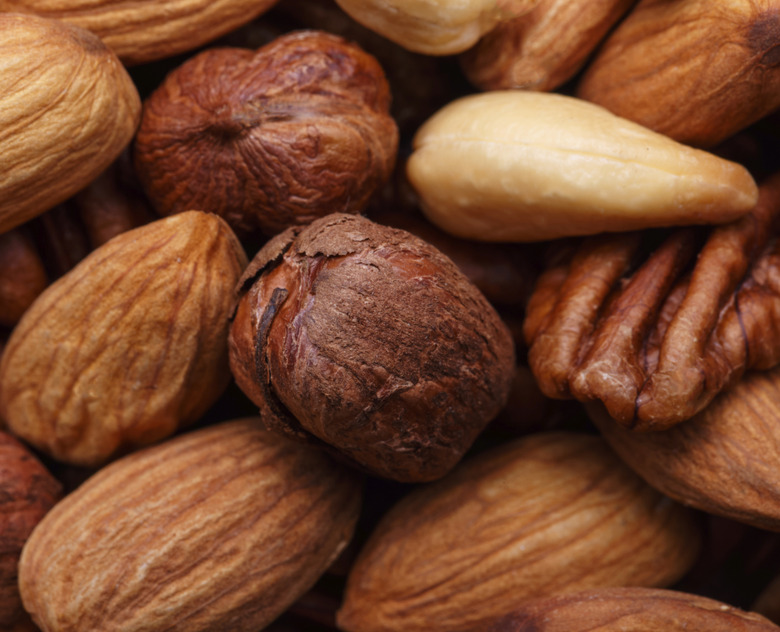How To Crack Hickory Nuts
Wild hickory seeds have to survive cold winters to germinate in the spring, which makes their shell nearly impenetrable by conventional nut-cracking means. Although you can't break through the hickory shell easily, you can strike it at the point the six shell segments converge to open the nut. Hickory shells have tough tissue, called septum, separating the two nut "halves," which are actually two seeds; if you strike the shell at the lower portion near the stem end, the segments separate, leaving the nuts in a few pieces. You can also buy hickory-nut openers in specialty food stores.
Wild hickory seeds have to survive cold winters to germinate in the spring, which makes their shell nearly impenetrable by conventional nut-cracking means. Although you can't break through the hickory shell easily, you can strike it at the point the six shell segments converge to open the nut. Hickory shells have tough tissue, called septum, separating the two nut "halves," which are actually two seeds; if you strike the shell at the lower portion near the stem end, the segments separate, leaving the nuts in a few pieces. You can also buy hickory-nut openers in specialty food stores.
Step 1
Wash the hickory nuts, rinsing any dirt and debris from the shells.
Step 2
Dry the nuts in an area that gets full sunlight for 24 to 36 hours. Turn the nuts over halfway through drying.
- Wild hickory seeds have to survive cold winters to germinate in the spring, which makes their shell nearly impenetrable by conventional nut-cracking means.
Step 3
Set the hickory nuts on the work surface. Position the nut so the stem points to the right or left.
Step 4
Strike the hickory nut about one third of the way down the shell, near the stem end, using a hammer. If the nut slips from the work surface when you strike it grip it with pliers.
Germinate Hickory Nuts
Roughly one dozen species belong to the hickory (Carya spp.) Hickory nuts ripen in late summer and early autumn. Once the husks darken in color and begin to split at the base, the seeds inside are mature and ready to germinate. Avoid nuts with deep cracks, mildew, chew marks or other signs of damage or deterioration. Ripe hickory nuts shed their husks easily, so no tools are needed, although a pair of pliers might help for stubborn segments. Stratification mimics the natural winter chill hickory seeds would experience in nature. Use a 2-gallon nursery pot with several drainage holes at the base and sterile potting soil. Although they appear to grow slowly, hickory seedlings actually grow quickly beneath the soil surface, and they must be transplanted by the end of their first growing season to avoid damaging their extensive root system. Hickories will tolerate full sun to partial shade, and they aren't fussy about soil type, but the soil does need to drain well. Sow three seeds in a triangular pattern at a depth of 3/4 to 1 1/2 inches. Provide water if no rain falls for longer than a week, and look for hickory seedlings in late spring. Hickories are relatively hassle-free trees. Spread the fertilizer under the tree's canopy in late spring, taking care not to get any on the trunk.
- Set the hickory nuts on the work surface.
- Hickories will tolerate full sun to partial shade, and they aren't fussy about soil type, but the soil does need to drain well.
References
- Mother Earth News: Hickory Nuts: The "Inside" Story
- Washington University in St Louis: Carya Spp.
- University of Illinois Extension: Shellbark Hickory
- Texas A&M AgriLife Extension: Germination of Tree Seed: Growing Trees Can Be Fun
- University of Florida IFAS Extension: Landscape Plant Propagation Information: Carya Ovata
- University of Florida IFAS Extension: Landscape Plant Propagation Information: Carya Laciniosa
- University of Florida IFAS Extension: Landscape Plant Propagation Information: Carya Glabra
- University of Kentucky Cooperative Extension: Nut Tree Growing in Kentucky
